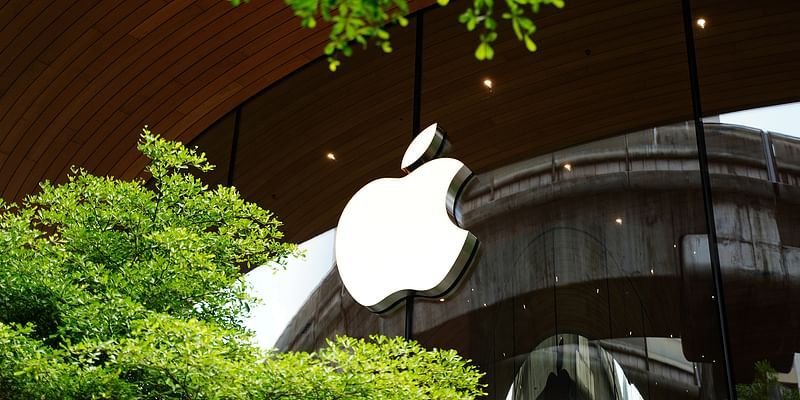[ad_1]
has set a quarterly revenue record in India, bolstering a positive overall sales performance for the June-ended quarter—the highest rise in seven quarters—despite a slight decline in iPhone sales.
“Apple is reporting a new June quarter revenue record of $85.8 billion, up 5% from a year ago, and better than we had expected,” said Apple Chief Executive Officer Tim Cook, during the company’s third-quarter earnings call.
The iPhone maker’s growth in India contrasts with a 6.5% year-on-year decline in net sales in China—its third-largest market—in the June-ended quarter.
Cook noted that in China, over 50% of the year-over-year decline was currency-related, marking an improvement from the first half of the fiscal year and an encouraging acceleration.
Globally, along with a revenue increase, the company’s profit rose in the third quarter of the financial year, an improvement from the preceding quarter when both figures were in the red.
In Q3, Apple’s net profit rose to $21.4 billion, up 7.9% year-over-year.
iPhone and services
Apple’s flagship smartphones have driven the company’s sales. However, this marks the second consecutive quarter of declining iPhone sales, though the drop was less severe than in the previous quarter. iPhone revenue dropped about 1% to $39.3 billion in the second quarter.
Fortunately, Apple’s services sales provided a much-needed boost. Revenue from services reached an all-time high of $24.2 billion, up 14.1% year-over-year, with paid subscriptions hitting a record high.
iPad devices sales also shot up during the quarter, touching $7.2 billion, up 23.7% year on year.
“The iPad install base has continued to grow and is at an all-time high, as half of the customers who purchased iPads during the quarter were new to the product,” Apple Chief Financial Officer, Luca Maestri, noted during the earnings call.
Meanwhile, Mac products generated $7 billion in revenue, up 2.5% year over year, “driven by the MacBook Air powered by the M3 chip”.
Apple launched its M3 chip family, including the M3, M3 Pro, and M3 Max, featuring a next-generation GPU architecture, enhanced CPU, and Neural Engine, last October.
“We saw particularly strong performance in our emerging markets, with June quarter records for Mac in Latin America, India, and South Asia,” Maestri said.
Overall, sales from Apple products amounted to $61.6 billion, representing a 1.6% increase year on year.
Apple Intelligence
In June, Apple unveiled its very own brand of artificial intelligence (AI)—Apple Intelligence, marking a new chapter in its long line of innovations.
“Apple Intelligence will transform what users can do with our products—and what our products can do for our users,” Cook had said at the launch.
The California-based company, like many other firms, is betting big on AI.
“We will continue to make significant investments in this technology,” Cook noted.
Apple Intelligence supports a range of devices: iPad Pro, iPad Air, MacBook Air, MacBook Pro, iMac, Mac mini (all featuring M1 chips or newer), Mac Studio with M1 Max or later, Mac Pro with M2 Ultra, alongside iPhone 15 Pro and iPhone 15 Pro Max.
“In terms of the requirements to run Apple Intelligence, there are system requirements and there are silicon requirements. And so from an iPhone point of view, iPhone 15 Pro and Pro Max will run Apple Intelligence and the successor products obviously,” Cook clarified.
Like clockwork, Apple will launch its new flagship devices, including the iPhone 16 series, in September. This is expected to prompt a higher upgrade cycle to newer devices that support Apple Intelligence.
“We are very excited about Apple Intelligence and what it brings, and it is another compelling reason for an upgrade … I believe it will be a very key time for — and a compelling upgrade cycle,” remarked Cook.
Giving an outlook for the ongoing quarter, Maestri said Apple expects the quarter’s total company revenue to grow year-over-year at a rate similar to the June quarter.
“We expect services revenue to grow double digits at a rate similar to what we reported in the first three quarters of this fiscal year. We expect gross margin to be between 45.5% and 46.5%. We expect opex to be between $14.2 billion and $14.4 billion,” he added.
[ad_2]
Source link





